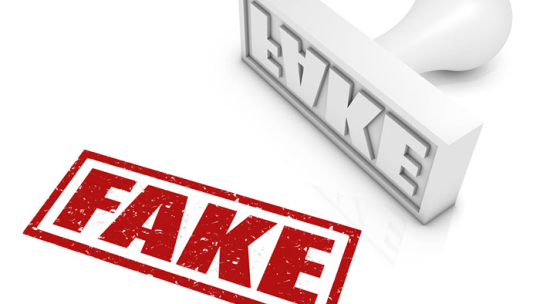
When it comes to our home and the outdoors, we all want to breathe clean air and drink clean water.
When it comes to our education, we want clean copy and trust what we see and hear.
Unfortunately, we’re dealing with a wave of information pollution that is impacting our planet.
Since we all want to trust the content that we read, hear or see, the question is, how do we get better at doing this in a media world, where there are fewer gatekeepers and more channels being created every day?
The answer is that there is a growing series of solutions designed to make the information world safer. We can all play a role in vetting and potentially using some of these tools and platforms.
It's Easy
The backdrop is simple. The ability to exaggerate the truth, spin a conspiracy, start a hoax or spread falsehoods has never been easier due to the availability of so many channels operating without gatekeepers.
This relatively new area of disinformation can be broadly defined as false information deliberately created to mislead, create distrust and sow uncertainty and chaos.
Though used interchangeably, disinformation is not to be confused with misinformation, which, while also being false information, is created and spread unintentionally by citizens around the world.
The key question is what can we do about it? It is here that we look to you to join us in being part of a larger gatekeeper community to protect our global village.
What’s Available?
There are tools, approaches and applications that can help spot disinformation, how to expose it and push back against it.
For example, First Draft News is working to help everyone from the average news consumer to newsrooms understand and deal with disinformation. It provides easy-to-use flashcards, accessible text courses, and illuminating webinars.
Poynter offers similar trainings and courses designed for the classroom, office or newsroom.
An online hub like Disinfo Cloud highlights the latest technologies and tools to help fight disinformation. It features social listening tools common in the marketing industry as well as consumer-friendly browser extensions. These help discern factual information from contested information and reputable sites from low-quality news sites that frequently peddle misleading information.
These tools are assessed according to their perceived strengths and weaknesses and their ability to help combat disinformation. Disinfo Cloud users determine which tools might best help them as they navigate the information environment. In addition, it compiles the latest news, research, and events around the world to help keep users informed of trends in misleading information.
[Editor's Note: Christina Nemr, co-author of this essay, operates DisinfoCloud.com for the US State Department.]
Communicators' Role
So, why does disinformation matter to communicators?
Our belief is that combating disinformation is an emerging discipline for communicators. If you think of it as the next generation of issues management, it becomes a skill we all need to learn and study to avoid getting caught up in the quagmire of misleading information.
The best next step is to look into the above tools and keep an eye on how innovative companies are developing solutions that may benefit all of us.
What you learn may help you protect our companies, communities, children and our countries.
Bob Pearson is founder & chair, The Next Practices Group, LLC
Christina Nemr is director, Park Advisors
